Anglers Booking Team
The expert copywriters at Anglers Booking have meticulously crafted this article. Our dedicated team of writers provides valuable insights and information to enhance your angling experience.
 12 minutes read
12 minutes readNavarre is more than a beautiful beach town; it's a true paradise for anglers. With its clear coastal waters and diverse array of species, it offers both peaceful flats fishing and thrilling offshore action. Just always be sure to follow local fishing regulations and have a valid Florida fishing license before casting your first line.
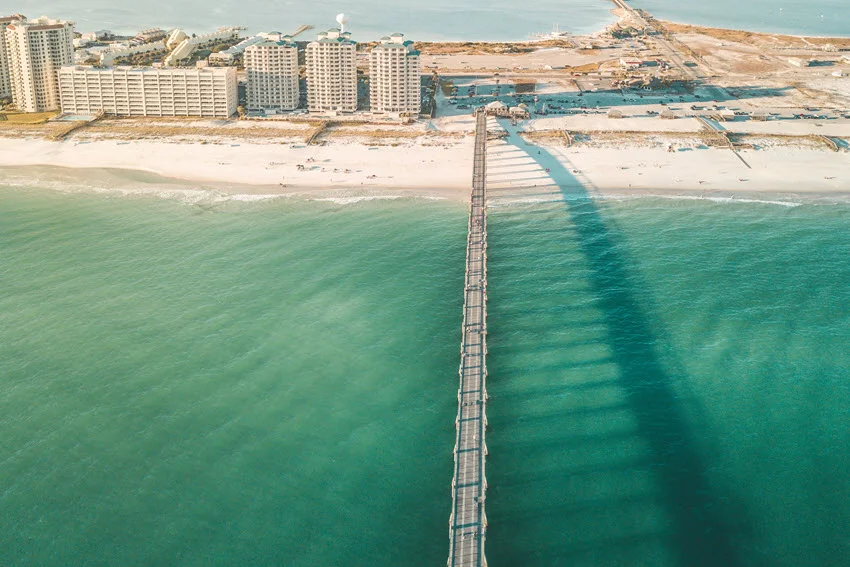
Whether you're aiming for Redfish in the shallows or chasing Tuna offshore, this guide covers it all. We'll walk you through the top fish species, best techniques, seasonal tips, and local gear shops to make your trip to Navarre one to remember.
Navarre doesn't boast a prominent fishing reputation for no reason! Its waters have a diverse range of species available, and you can catch various fish in trophy sizes! Let's first explore the native ones!
The essence of Florida fish swims in Navarre's waters and surroundings all year round! Even if you just focus on those fish species, you won't get bored, and your catch will be good! From Redfish to Trout to Flounder and Jack Crevalle, you have to admit this is a first-class offering of fish species!
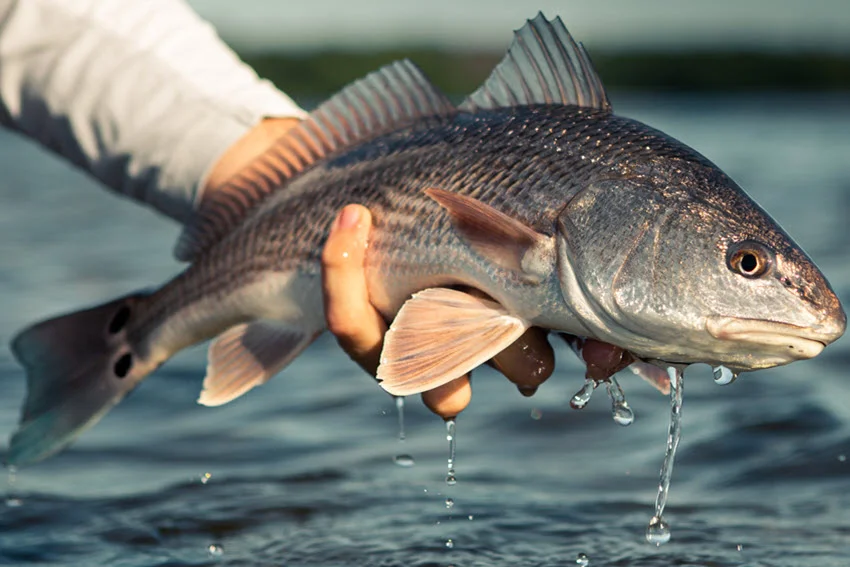
Redfish are one of the most iconic inshore species in Navarre, easily recognized by their bronze-red body and the black spot near their tail. They thrive in shallow marshes, backwaters, and around structures like docks and piers. Most range from 20 to 40 inches, with trophy fish exceeding 30 pounds.
The primary season in Navarro usually lasts from April to November, although they are available year-round. As for some of the best Redfish baits, they are also greedy, so they respond well to both live and artificial baits near structure. Try fly fishing on the flats or casting soft plastics around oyster beds for reliable action.
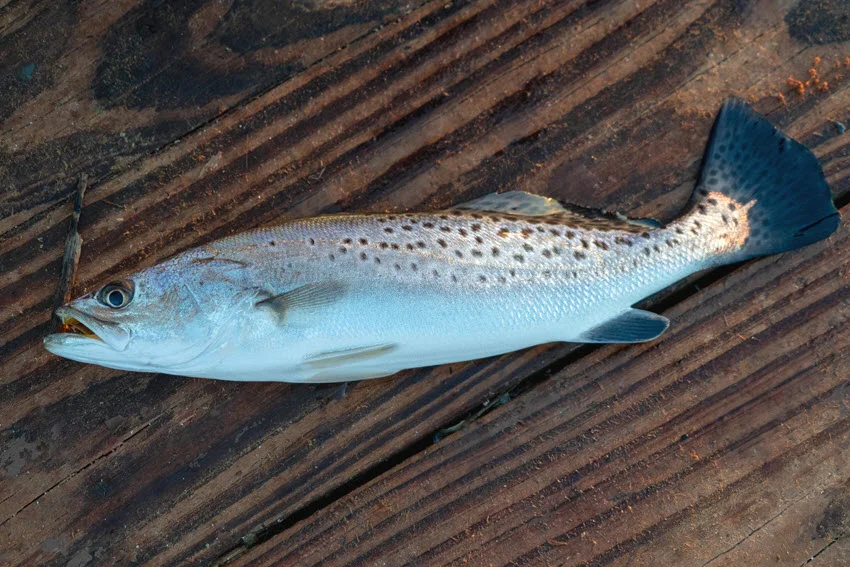
In the waters of Navarre, the Spotted Seatrout and Redfish are the most highly valued fish species. The Spotted Seatrout is particularly sought after for its delicious flesh and has the advantage of inhabiting secluded habitats. This Trout swims in grasslands, tidal streams, oyster beds, and shallow coastal waters. It can grow to a height of approximately 30 inches in optimal conditions.
Spotted Trout have an olive-green body decorated with numerous black spots that extend onto the fins and tail. Their bodies shine with a silvery sheen, which completes their striking appearance, making them visually stunning. This fish is always intriguing, mysterious, and delicious, so a lucky catch brings double pleasure.
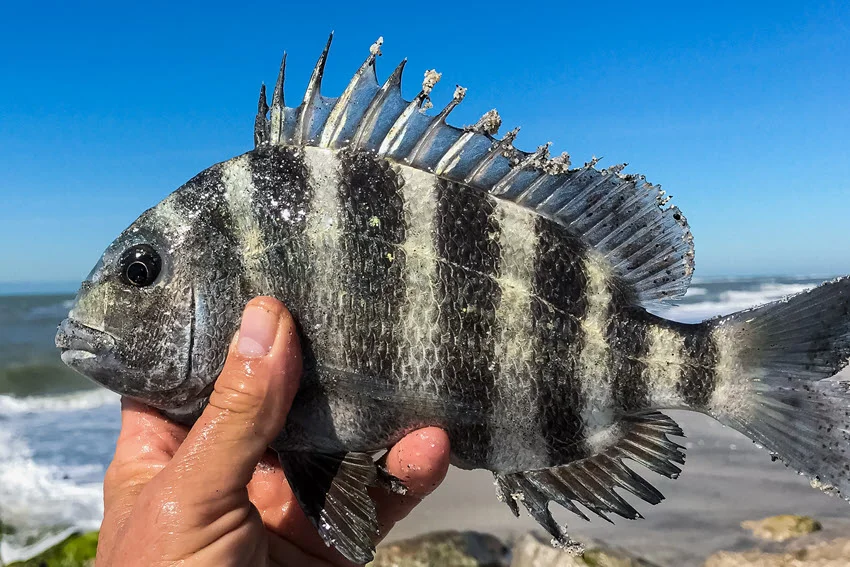
In the coastal waters of Navarre, the Sheepshead is a prized catch known for its unusual name reflecting its robust build, but also variations in weight ranging from 12 to 20 inches, with the occasional specimen stretching up to 25 inches. Sheepshead prefers cleaner coastal environments, often congregating around rocky areas, pilings, and bridge abutments.
They are known as selective feeders, requiring finesse in the presentation of baits, mainly shrimp, crabs, and crayfish. Anglers generally catch them on the bottom around the structure, drifting with the tide, and jigging near rocky outcrops. With a striking appearance, challenging behavior, and excellent taste, Sheepshead is particularly attractive to many anglers in Navarre!
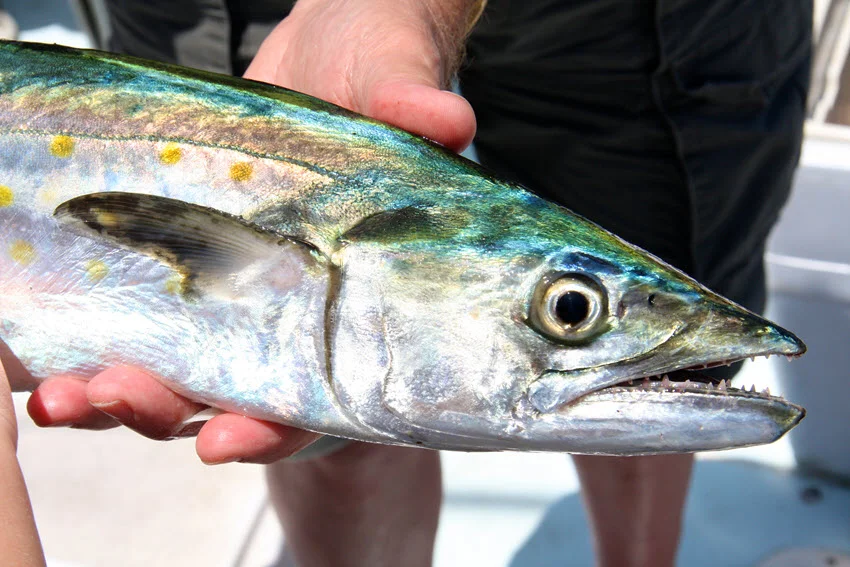
Spanish Mackerel is a challenging and dynamic native species that can grow between 12 and 20 inches, with some individuals reaching up to 30 inches. They have beautiful, smooth, streamlined bodies adorned with striking blue-green backs and silver sides. Spanish Mackerel like to swim near coastal structures, reefs, and schools of baitfish.
They are aggressive when defending and attacking, so using live fish for bait, spoons, and bright bait is best. Since they are an invasive species, anglers of various skill levels and techniques try to catch them, and most often, they do that by trolling, casting, and jigging.
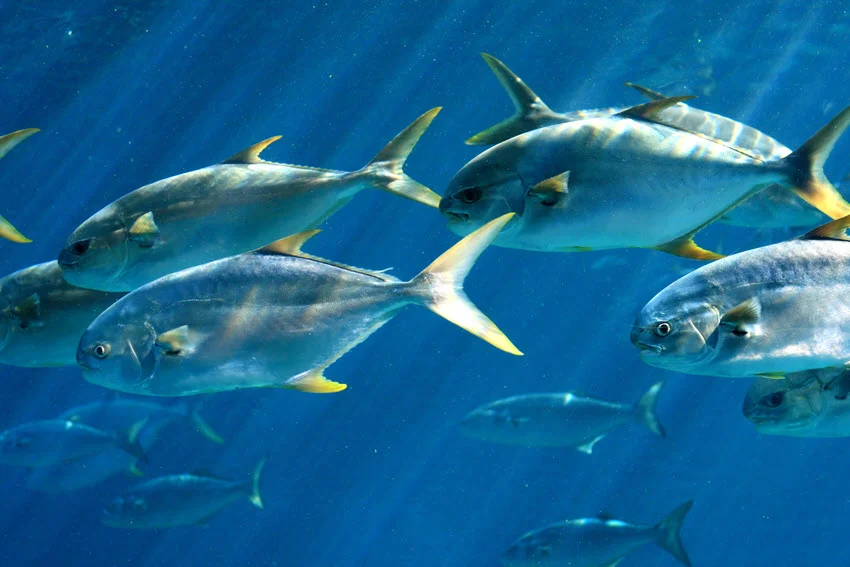
Pompano is a fish with a nice appearance: a sleek, silvery body with random yellow mottled markings, rounded off by a forked tail and a prominent dorsal fin. Although it doesn't appear to be a strong fighter initially, it is actually a robust species, weighing between 1 and 3 pounds and measuring 10 to 24 inches in length.
Pompanos are excellent fast swimmers who prefer sandy bottoms, shallow flats, and coastal reefs. To lure them, in addition to the presentation, the bait must be tasty, and it is best to use sand fleas, shrimps, and small crabs. This fish makes up for what it lacks in weight and behavior, and given its trendiness, it possesses that special something.
If you want to explore your fishing limits, test yourself, or are simply curious about Navarre, it's best to target migratory species. There are some nasty fish here. So, if you're up for it, keep reading, as we provide more detailed descriptions of some of them.
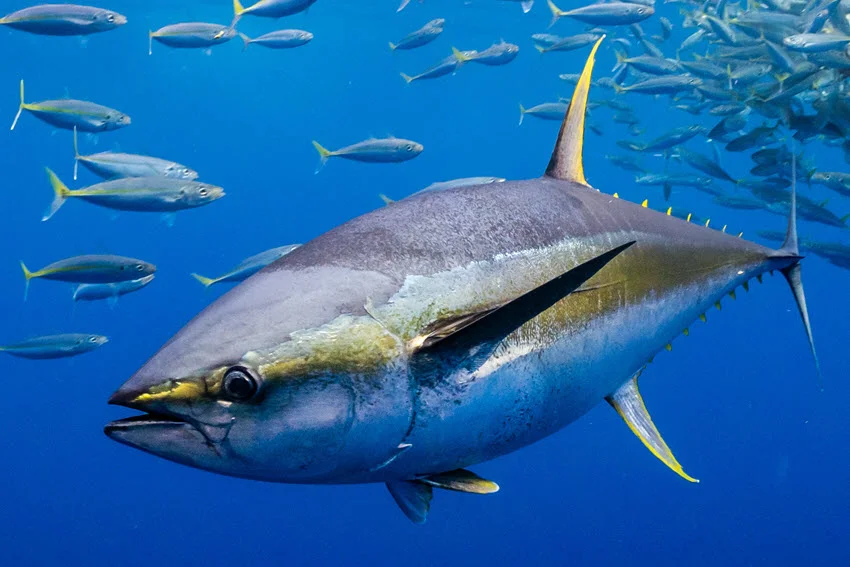
Tuna is a beautiful fish whose appearance and taste have delighted anglers worldwide for centuries. Cruel and tasty, the Yellowfin and Blackfin Tuna swim in the waters of Navarre. Typically, both species range from 20 to 60 inches long, with some reaching lengths over 6 feet. They have wicked, streamlined bodies perfectly built for the ocean, water, and speed.
Tuna are highly migratory and swim in deep-sea waters near underwater structures such as reefs, seamounts, and oil platforms. Tuna are caught by trolling or jigging with lures, live bait fishing, and snapping. Popular baits include live or dead bait fish, squid, and the best time to confront them is from June to September.
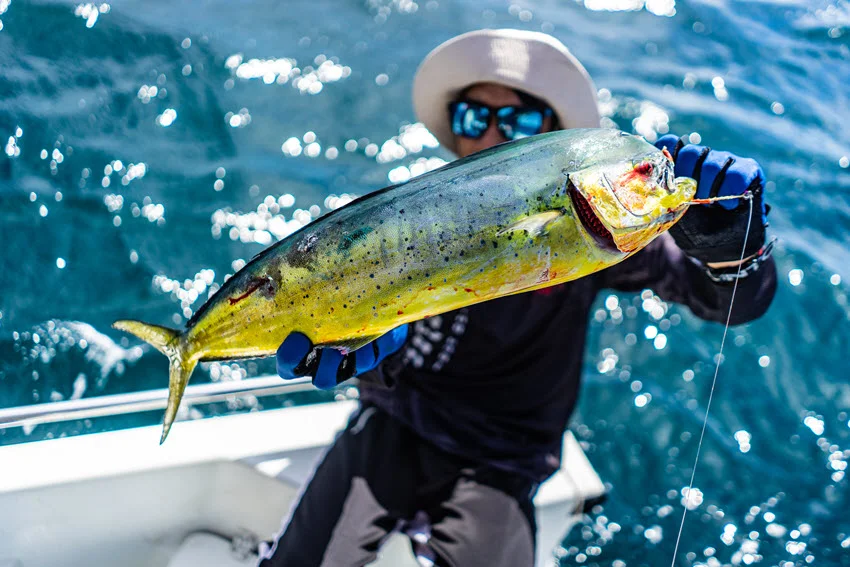
Mahi Mahi is a slightly different type of dolphin that is hunted not only for the thrill of fishing but also for its delicious meat. Mahi Mahi found in Navarre waters typically grow in the 20 to 40 inches range, with some individuals exceeding 5 feet. Their bodies are characterized by bright shades of blue, green, and gold, punctuated by distinctive vertical stripes.
Anglers catch them using techniques like trolling with brightly colored lures, live bait fishing, and casting. Preferred baits include ballyhoo and squid. They migrate and are the most abundant in these waters from June to September. Mahi Mahi will bring color and liveliness to your fishing achievements, as staying immune to this exciting fish is challenging.
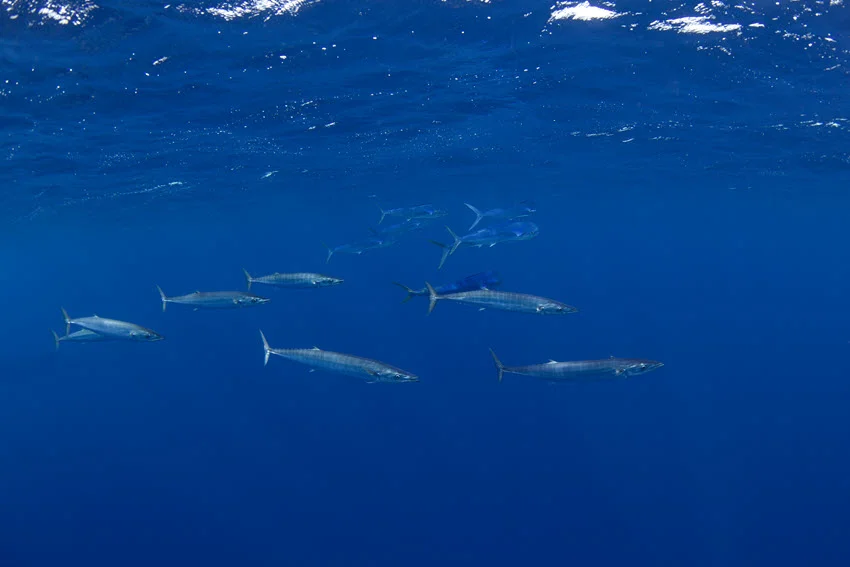
Wahoo is a smooth, predatory gentleman who likes to fight hard. Known for their strong, muscular bodies and distinctive vertical stripes, Wahoo can grow to impressive lengths, with specimens exceeding 6 feet and weighing over 100 pounds. They prefer deep offshore waters near underwater structures and current edges.
Known to be formidable hunters, catch them trolling at high speed with rigged lures or deep-sinking with heavy lures and setting up spreader rods or jigs to cover a wide area. Lures include rigged lures, strip lures, mullets, and squid. They migrate to these waters on several occasions from May to September.
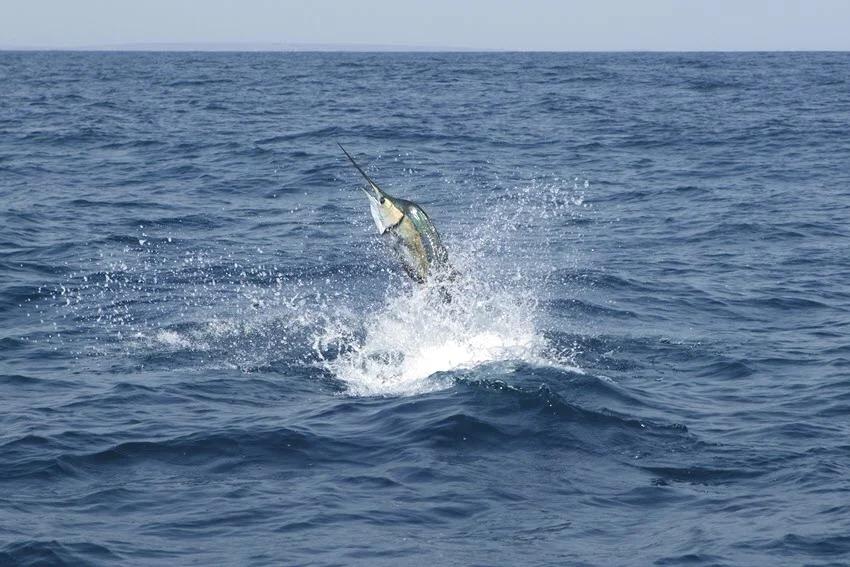
Sailfish are heavyweight fish, one of the stars and champions of the ocean fishing ring. They have been valued and celebrated since ancient times for their incredible speed, agility, and striking appearance. Sailfish have long, slender bodies and iconic sail-like dorsal fins. They can reach an astounding 10 feet and weigh over 200 pounds.
If you target Sailfish, the best time is during warmer months. Fishing for Sailfish is the crowning achievement for any angler, symbolizing skill, perseverance, and a deep connection to the wildness of the ocean. You must be prepared for such a battle, both physically and mentally.
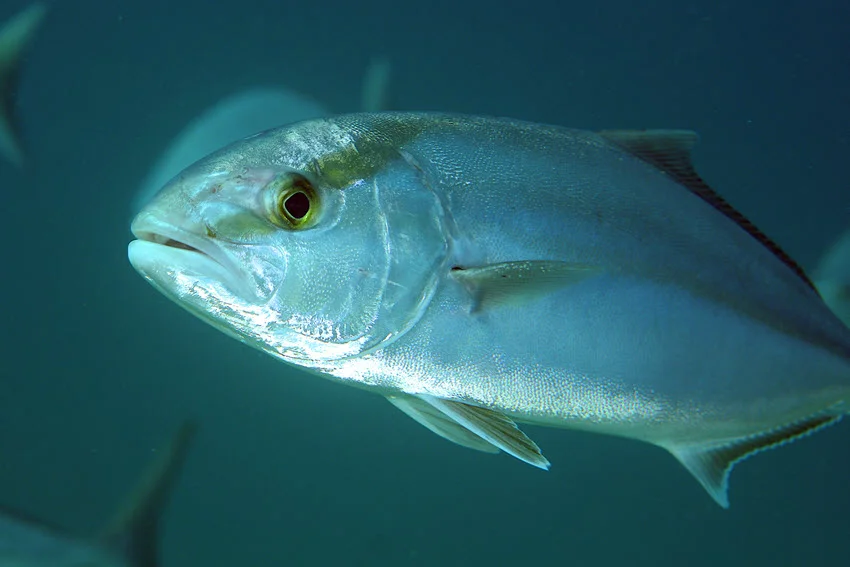
Amberjacks attract attention as formidable opponents, with an attractive amber-yellow hue that gave them their name. These fish are of robust size and possess powerful fighting abilities, characterized by their thick, torpedo-shaped bodies. The size range in which you can encounter Amberjack is also impressive, with specimens exceeding 5 feet and weighing over 100 pounds.
Amberjack is commonly found near sea reefs, wrecks, and underwater structures. They are ruthless predators known for their aggressive strikes and tenacious fighting style. Catching an Amberjack initiates an exciting battle with these muscular, bulldog-like fish. Once the bait is bitten, the process requires strength, skill, and determination.
Navarre and the surrounding area are rich in micro and macro fishing locations, reflecting the underwater fish species' wealth and abundance. So, we have selected several places to make navigating through prime fishing spots easier.
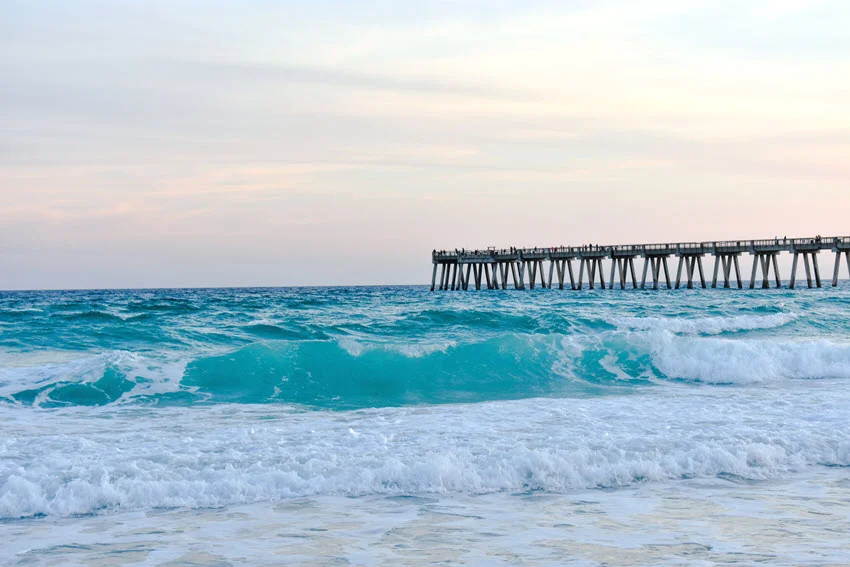
Navarre Beach Pier is a premier and widely renowned fishing destination along Florida's Gulf Coast. Very eye-catching, this is one of the longest piers in the Gulf of Mexico, extending 1,545 feet into the azure waters. It is an extension of land that offers fishing and pleasurable species. It is relatively close to the Navarre town center, about 9 miles away, and will take you 15 minutes by car.
The pier has covered pavilions equipped with benches and cleaning stations, which are more than fishing-friendly. There are also shaded areas for relaxing and cleaning your catch. You can cast from the jetty, kayak, or boat around the piers, which attract many species, especially Redfish, Pompano, Spanish Mackerel, and King Mackerel.
East Bay is in the heart of Navarre's coastal landscape, and this tranquil bay is one of those peaceful havens ideal for escaping everyday commitments. It is known for its calm waters and picturesque surroundings and is a perfect habitat for species such as Spotted Seatrout and Flounder, which thrive amidst the maze of seaweed and oysters.
If you enjoy exploring and kayaking, the East Bay, with its flat, winding canals, is a great choice. In addition, tranquility and a kind of shelter characterize the East Bay atmosphere, which, together with many complex underwater structures, creates a unique and intriguing concept for a fishing trip.
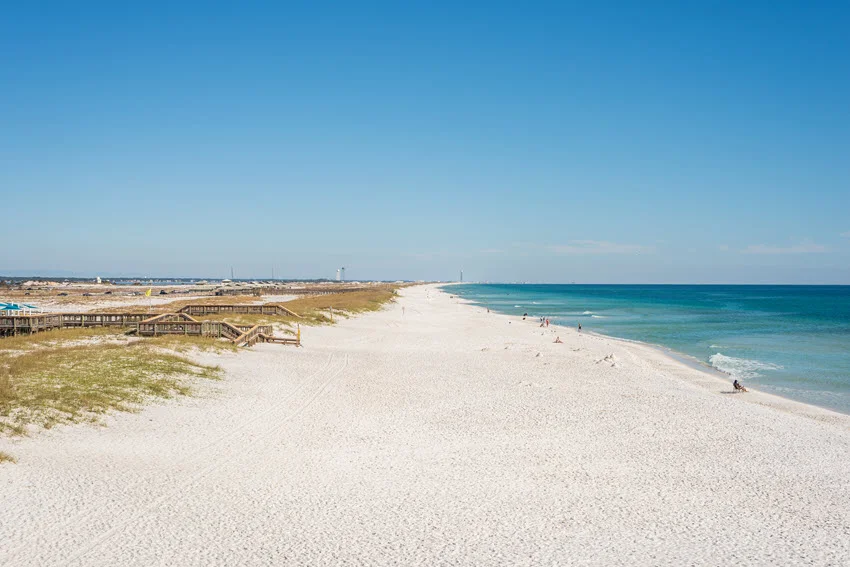
Navarre Beach is known for its opportunities for various ocean pleasures, including its untouched 12 miles of sandy shores, ideal for surfing and multiple forms of surf fishing. This idyllic coast part provides a perfect environment for shooting Pompano, Redfish, Whiting, and Flounder. You can launch a kayak or paddleboard and adapt to the dynamics of waves and tides.
The famous Navarre Beach Pier is also nearby, and you can explore this beautiful beach to your heart's content. It promises unforgettable experiences and the opportunity to catch prized catches against sun-kissed sand and turquoise water.
Sykes Ridge is an underwater mountain range located approximately 40 miles off the coast of Navarre. If adventure is your second name, anytime, anywhere, then this is the place for your new expedition.
Although the journey to this remote location may take some time, it is well worth the wait. Sykes Ridge is a natural underwater geological feature and, among other things, home to a diverse array of marine life, emphasizing Snapper, Grouper, and Amberjack.
Here, you can combine drifting, spearfishing, and jogging, but it is important to prepare well because the boat and equipment are challenging to maneuver. At the same time, you get the opportunity to disembark trophy catches in the remote and pristine waters off the coast of Navarre, making it a worthwhile adventure for anglers looking for a truly unforgettable fishing experience.
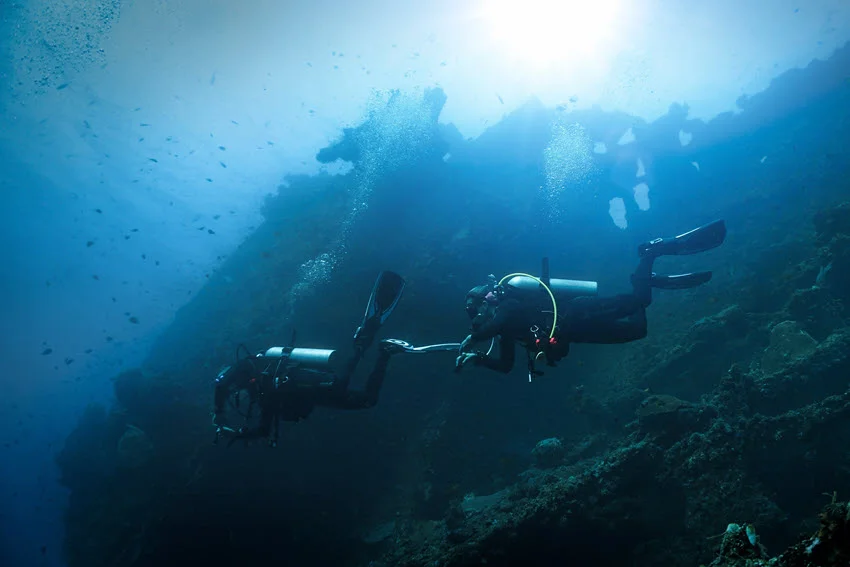
The Oriskany Wreck is a sunken aircraft carrier located approximately 22 miles and an hour and a half boat ride away, and is one of the favorite spots for a variety of fish, which automatically means many anglers. This legendary wreck, deliberately sunk to create an artificial reef, has become a prime fishing spot for Snapper and Grouper, as it has also developed a thriving ecosystem over time.
With its spacious structure, abundant marine life, and intriguing appearance, this wreck is a natural fishing playground with a twist. The Oriskany Wreck is worth noting, especially if you enjoy diving or exploring more subtle historical facts.
The beauty of fishing is that, among other things, you can combine so many different techniques, always learn something new, and never stop exploring and interpreting fishing. Here are some methods that fit perfectly into the whole Navarro fishing scenario.
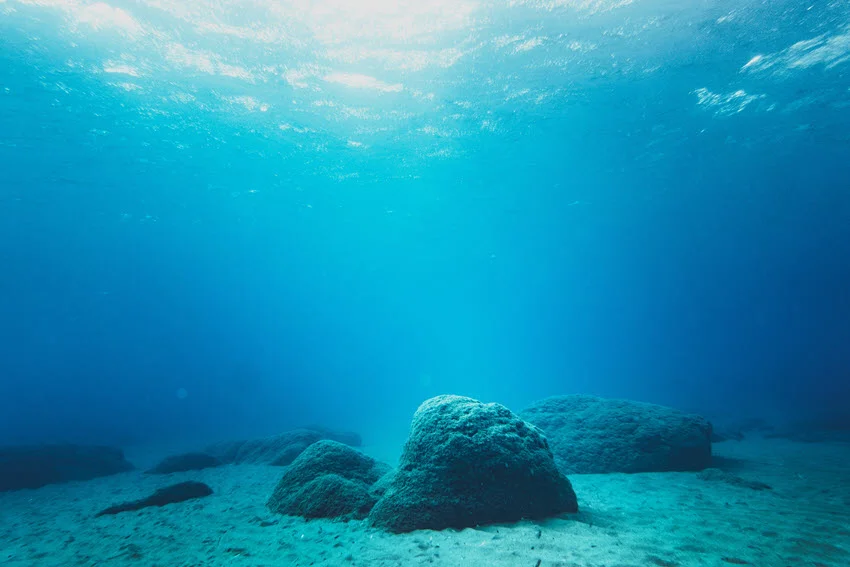
To begin with, to practice bottom fishing, you need to know how to locate concentrations of active fish in visible bodies and then use weighted lures or hooks to attract fish to the bottom of the water column. These are primarily locations around underwater structures, where anglers reach the seabed with the help of hooks or rigs with bait, often reinforced with weights.
This technique is particularly effective for catching Grouper, Flounder, and Triggerfish. It is essential to skillfully combine all elements, emphasizing natural baits such as squid or shrimp. Specialized equipment maintains the baits' position on the bottom. Bottom fishing in any area along Navarro promises excitement, anticipation, and spirited battles with deep-dwelling ocean species.
It is not only for deep water; depending on the target species, you can practice it from various habitats, shores, jetties, and boats. The technique is relatively straightforward, but the combination possibilities are almost endless.
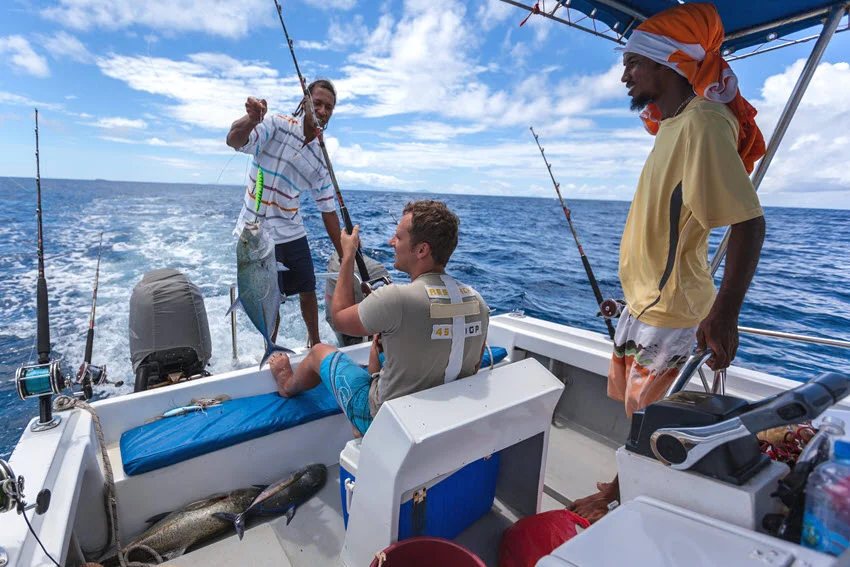
For most anglers, trolling is synonymous with open sea fishing, where they target pelagic predators such as Marlin, Tuna, and Sharks. The technique advances in step with modern technology. However, the essence remains the same: it embodies the rawness and unpredictability of the marine environment, which is essentially the act of pulling lures behind a moving vessel.
Depending on the target species, the choice of bait is mainly a range of ballyhoo, squid, mullets, mackerel, or one of many artificial baits. Seemingly simple, it requires a delicate balance of speed, movement, and bait control to gain a productive catch.
Trolling uses the attraction of fast-moving prey and is also applicable in freshwater areas. It relies heavily on speed and boat maneuverability, whether slow, moderate, fast, or a combination of these. This technique is often used for targeting large oceanic bigheads and requires experience or the guidance of an experienced angler.
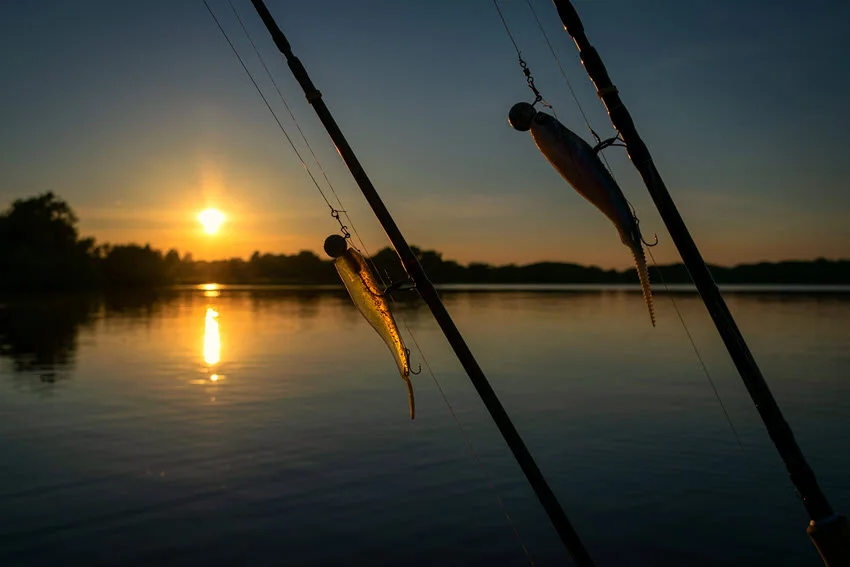
Jigging is another technique for great depths and larger fish. It is dynamic and efficient, but also considerably complicated. Jigging is a so-called vertical fishing technique. It involves using heavy metal jigs with a weighted design lowered vertically into the water column.
Once set, the jig quickly returns with sharp upward jerks and pauses, simulating the movement of fleeing prey. Jigging is the best choice if you aim at species such as Amberjack, Grouper, and Snapper, which often inhabit deeper inshore environments. It also allows anglers to quickly and efficiently cover a wide range of depths, presenting the bait directly to fish near the bottom or in the water column.
Jigging requires precise timing, coordination, and smooth movement to mimic the lure's natural action effectively. Knowing the fish's behavior is crucial to adapting the technique by changing the draw's speed, rhythm, and depth.
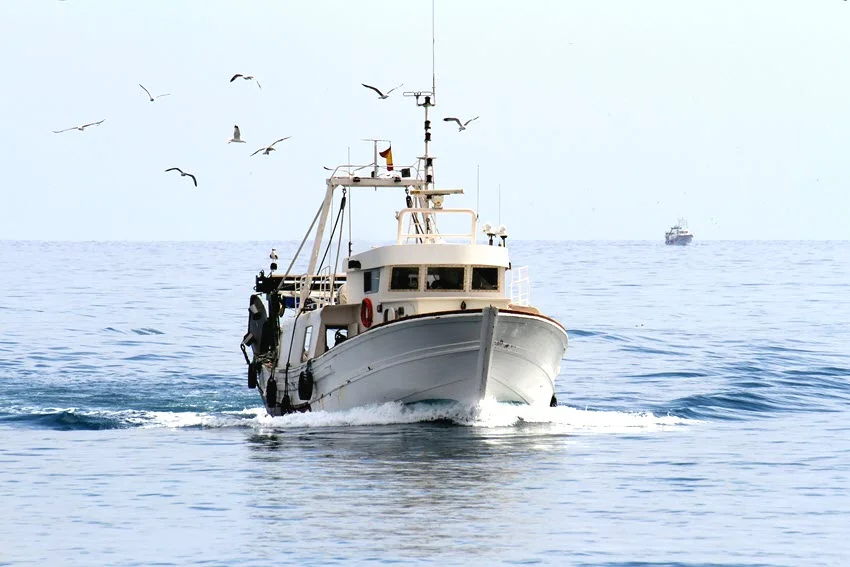
Drift fishing is a versatile fishing technique that capitalizes on and utilizes the natural movement of the water, harnessing its currents to entice the desired fish to bite the bait. It implies allowing the boat to sail with the current, wind, or tide, using this passive motion to its advantage.
After locating the fish, anglers cast their baits or lures from a floating boat. This allows them to cover a vast water area as the vessel moves, thus targeting multiple species simultaneously.
This technique is well-suited to nature, allowing anglers to present the bait naturally and attractively, while also exploring different areas and depths. Factors such as wind direction, current speed, and water depth must be taken into account to maximize the success of the drift. Drift fishing offers a combination of relaxed swinging and quality strategy that can yield great catches.
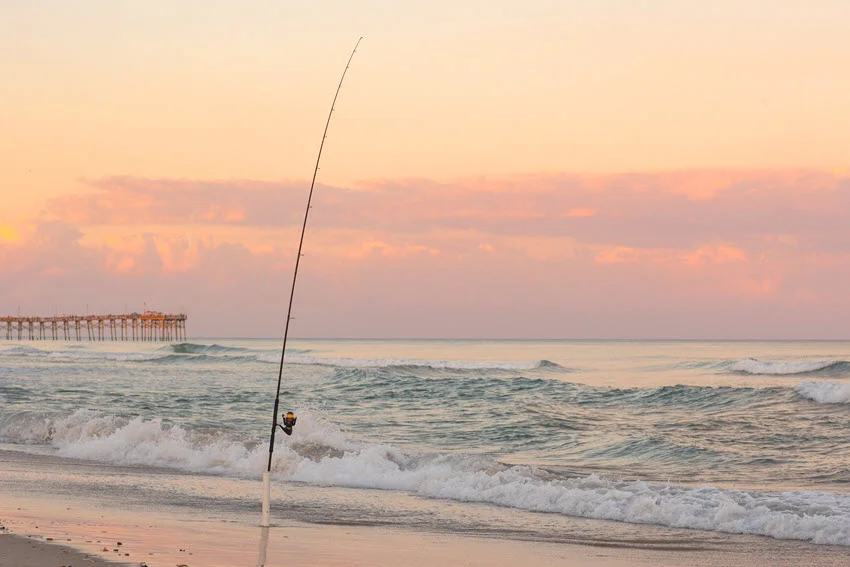
Surf fishing is a prevalent and attractive fishing technique involving casting a line from shore into the breaking waves to target and catch various species of inshore fish. Anglers wade into the surf or stay on the beach while casting a line into the water to see species such as Pompano, Redfish, and Whiting, which often use shallower waters near the coast.
Surf fishing relies on the power of nature, more precisely, the waves and the change of tides, which often bring fish closer to the shore. It primarily uses live or cut bait, artificial baits, and surf rods equipped with heavy reels to withstand surf conditions.
Additionally, surf fishing can be combined with bottom fishing techniques, casting, retrieving, or even using surf-specific equipment, aiming for a better presentation and catch. Surf fishing is exciting and adventurous, and if surfing is your passion in addition to fishing, then you are in for a double win.
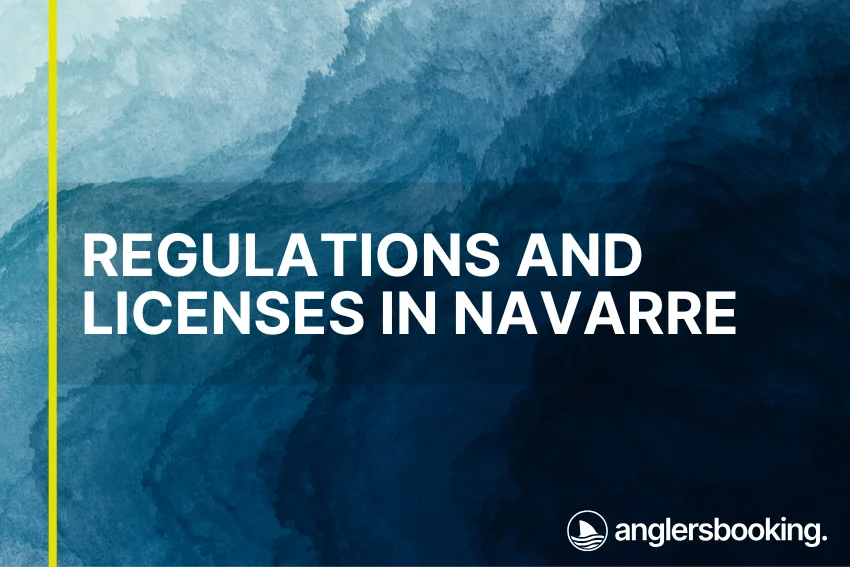
Understanding fishing regulations in an area is crucial for protecting fish populations and ecosystems and promoting responsible angling practices.
Anglers Booking team
Relaxed and, at the same time, responsible fishing requires compliance with the Fishing Regulations and possession of the necessary permits. So, to fish in Navarre with peace of mind, you must have a license issued by the Florida Fish and Wildlife Conservation Commission (FWC). They are responsible for ensuring sustainable fishing practices and preserving fish populations.
In Navarre, all anglers over 16 must possess a valid Florida fishing license, which can be obtained online through the FWC website, at local bait shops, or from authorized agents. Depending on your interest in fishing, various license options are available, including short-term, annual, and lifetime licenses, each with different fees.
Special fishing regulations apply to different species, seasons, and locations in Navarre. These regulations dictate size and bag limits, closed seasons, and gear limits for other fish species.
Before starting any fishing activity, it is essential to familiarize yourself with all currently valid rules and possible bans on hunting specific species to ensure compliance and avoid potential fines or penalties. By following the rules and having permits, you will also contribute to preserving Florida's unique and complex underwater and coastal ecosystem.
Fishing in Navarre encompasses a myriad of experiences. A famous location, it is inspiring, fruitful, and constantly upgraded without losing its essence and authenticity. This adds up to Navarre's magnetic appeal, which keeps anglers returning. We hope that we and our guide contributed to that attraction and that we inspired you to go on a new fishing expedition!
As always, we would love for you to share your impressions of Navarre, fishing, our guide, and anything else you think is worth sharing with old, current, and future fellow anglers. See you in the comment section! Happy fishing!

The expert copywriters at Anglers Booking have meticulously crafted this article. Our dedicated team of writers provides valuable insights and information to enhance your angling experience.
Embark on unforgettable fishing adventures with us at Anglers Booking.
book your charterOctober 17, 2025
October 15, 2025
October 10, 2025
October 11, 2025
October 4, 2025
September 29, 2025
September 25, 2025
September 21, 2025

You're now part of our exclusive community. Get ready for premium content and updates straight to your inbox.
close
Subscribe to our newsletter and receive a selection of cool articles every week.
Please enter a valid email address.

Be the first to know when we're back in action.
Please enter a valid email address.
Leave a Comment
Your email address will not be published. Required fields are marked *
Thank you for your comment! It has been submitted for review and will appear on the site shortly.